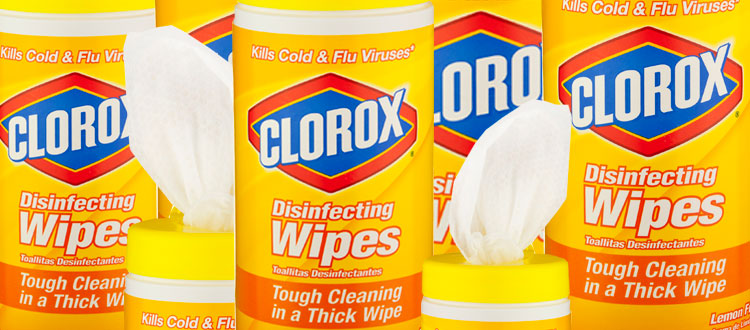Reduce Your Usage & Alternatives
| Kitchen | Reduce: If you practice good food safety, wash your hands (especially after handing raw meat), and do not leave cooked food on counters for longer than two hours, daily disinfection at home is simply unnecessary. | Alternatives: To clean your sinks and counters without unnecessary exposure to disinfectants, try a creamy soft scrub made with baking soda, castile soap, and vegetable glycerin*. Baking soda is great for neutralizing acid, and cleaning stainless steel and porcelain. For tough cleaning jobs, spray the surface first with vinegar, which will eliminate 90-98% of bacteria. Vinegar is safe enough to eat, making it a good choice for everyday cleaning! |
|---|---|---|
| Bathroom | Reduce: Bathrooms are often small, poorly ventilated, or unventilated spaces, and fumes from antimicrobials can build up to problem levels fairly quickly. Focus on disinfecting only those areas that get frequent hand contact–like toilet flush handles, sink faucets, and light switches. | Alternatives: Instead of using a tablespoon full of bleach to clean your toilet bowl, sprinkle the bowl with baking soda, drizzle with vinegar, let sit for 30 minutes, and scrub with a toilet brush*. Vinegar not only deodorizes, it’s highly acidic, making it effective at destroying bacteria. Baking soda also deodorizes in addition to cleaning and polishing porcelain. |
| Baby’s Room | Reduce: Being a mom means constant cleaning. But cleaning and disinfecting are not the same. The majority of messes, like food spills and spit up, can be cleaned without using antimicrobials. In fact, experts agree that the best way to prevent transmission of germs to a baby is to wash your hands before handing her/him. | Alternatives: Wash your baby’s bottle with soap and water instead of soaking it with bleach; soap and water is still the best way to get rid of germs, and won’t leave a bleach residue on a bottle lid that regularly goes into your baby’s mouth. If you need to sanitize the bottle (because milk was left in it for too long, for example), you can put it through your dishwasher–or just boil the parts in water for a few minutes to get rid if any lingering bacteria. Don’t keep disinfectant wipes near the changing table; you don’t want to confuse them with your baby wipes when you’re changing diapers. Instead, keep a spray bottle of full of half vinegar, half water for quick clean-up jobs.* The vinegar deodorizes, and is just as effective as commercial disinfectant cleaners in reducing microbes on a surface. |
| Laundry Room | Reduce: You can get clothes white and keep colors bright by using less toxic ingredients than bleach. Apart from health concerns around using bleach, overuse of bleach can also eat holes in your clothing. | Alternatives: Ditch the bleach for whitening your laundry. For a whitener, use hydrogen peroxide rather than bleach. Soak your dingy white clothes for 30 minutes in the washer with 1/2 cup 3% peroxide. Launder as usual. |
Precautions to take when using disinfectant products
- Consider whether this is a situation in which you need to use a disinfectant product. Is it simply everyday cleaning? Could a home-made safe cleaner or regular cleaner do the job instead?
- Wear gloves. Many antibacterial chemicals cause skin irritation like rashes or burns. If you’re cleaning with your bare hands, you may also run the risk of inadvertently transferring these chemicals to your mouth or eyes. In addition, quats have been shown to leave a long-lasting residue on surfaces, which may remain on your skin.
- Never mix products. Chemicals in cleaning products can have dangerous reactions with one another. For example, the mixture of bleach and ammonia creates deadly chloramine fumes.
- Clean in a ventilated space. Chemical fumes and emissions can reach potentially dangerous levels in minutes in smaller, poorly ventilated rooms like a windowless bathroom. Be sure to turn on a fan or open a window—if neither of these options exist, consider substituting a safe home-made product with disinfectant properties, such as vinegar or baking soda.
- Be sure children aren’t in the room. Children are often more vulnerable to chemicals because their organs and immune systems aren’t fully developed, and certain chemicals—particularly triclosan and triclocarban—can interfere with the development of their neurological, endocrine, and immune systems.





